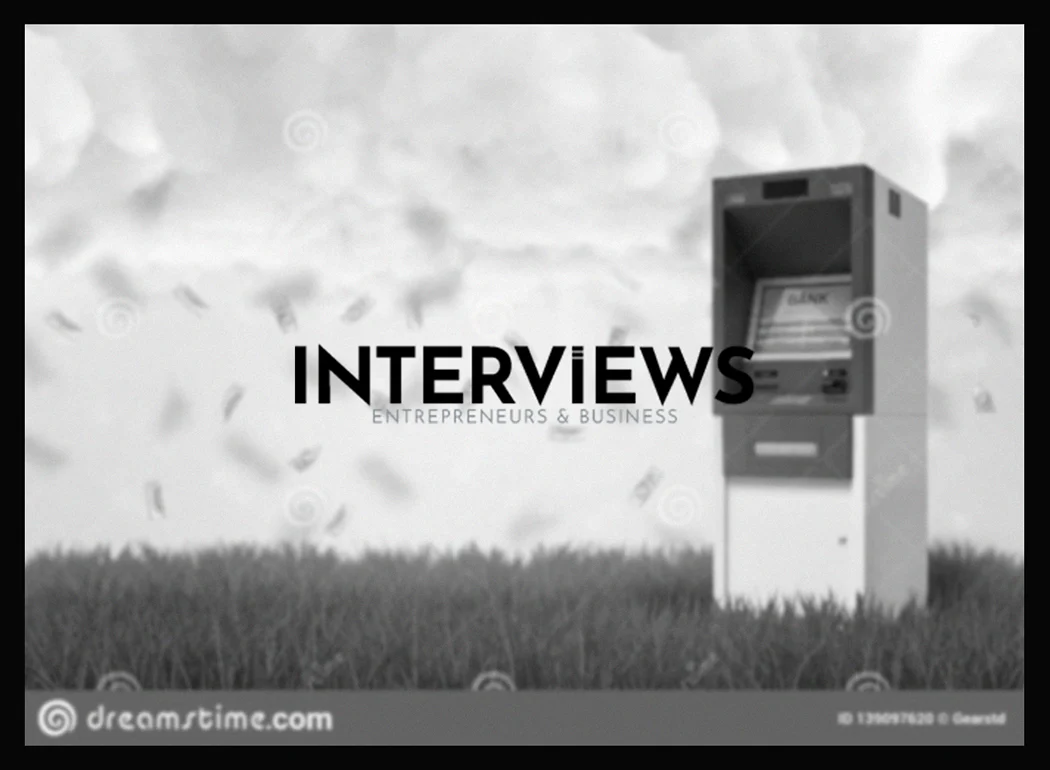Thinking About Diving into the ATM Business? Let’s Cash In on Some Truths.
You want to start an ATM business? Owning ATMs can be a highly profitable venture. Yes, even in this digital world of mobile payments.
Don’t dismiss them. ATMs are not relics. They still thrive. In 2018, the ATM industry earned $32.7 billion, up 3.6%. People still use cash.
Is the ATM Business Actually Profitable? Short Answer: Cha-Ching!
Let’s be direct. It is profitable. Place your ATMs strategically. This can lead to serious income. Consider a fleet of ATMs for steady revenue.
Plus, low overhead costs. Forget storefronts or employees. ATMs work for you around the clock. You can manage from home, restocking only when necessary.
How Much Moolah Can One ATM Bring In?
One ATM can generate significant profits. Operators see monthly earnings in the thousands from a single machine. Expand to a fleet, and you might earn hundreds of thousands yearly. Yes, large networks can yield incredible profit.
The Secret Sauce: Location, Location, Location!
Hold up. This isn’t just about placing an ATM anywhere. Profitability depends on key factors:
- Location: Critical. Seek high-traffic areas. Urban centers, tourist spots, and cash-reliant businesses are ideal. Nightclubs and bars are goldmines. With easy cash access, patrons spend more, and you benefit from fees. BusinessNewsDaily.com confirms this.
- Transaction Volume: Essential. More users equal more fees. Busy spots such as bars and tourist sites can handle up to 500 transactions monthly.
- Fees: Your profit comes from surcharges. While they differ by location, setting a fee of $2-$3 per transaction is key.
Dipping Your Toes In? The Initial Investment Isn’t Bank-Breaking.
Ready to start? What’s the cost? The initial investment isn’t out of reach:
- ATM Machine Cost: Expect $2,000 to $8,000. Basic models are cheaper, while advanced ones cost more. Most new ATMs average $2,500-$3,000. Used options are also viable, typically $1,600-$1,800.
- Initial Cash Stock: You need cash in the machine. Costs can vary from $500 to $16,000. Most starting operators stock between $1,000 and $3,000 for initial setups.
- Licenses and Permits: Legal compliance is essential. Obtain necessary licenses and permits to operate an ATM business in your area.
- Business Plan: Important, though not a direct cost. Create a plan for startup budgeting, operational scope, and strategy. This can help secure necessary funding.
Running the Show: Operations and Management – Not Rocket Science.
Managing ATMs requires effort and attention. Think of yourself as a gardener for cash machines. Key operations include:
- Location Scouting: Find busy areas with minimal ATM competition. Target businesses that need quick cash.
- Machine Management: Regularly check and stock your ATMs. Maintenance is vital for keeping them working well.
- Cash Reloading Frequency: Determine how often to refill based on location usage. Busy machines need frequent attention.
- Cash Management: Keep accurate cash flow records. Efficient cash management helps maintain enough cash on hand.
- ATM Replenishment: You can do the replenishment yourself or hire a company for cash logistics.
- Maintenance: Regular upkeep prevents downtime. Machines need attention just like anything else.
- Servicing Fees: If you outsource service, factor in these costs into your budget.
Money, Money, Money: Revenue Streams Beyond Surcharges.
Surcharges are vital, but boost your income in other ways:
- Transaction Fees (Surcharges): The main income source. Charge $2-$3 per transaction.
- Advertising: Sell ad space on your ATM screen for local businesses. This can generate additional revenue.
- Interchange Fees: Receive fees from banks when customers from other institutions use your ATM.
- Commissions: Consider partnerships with local businesses to share transaction fees for mutual benefit.
Navigating the Bumps: Risks and Challenges.
No business is without risks. Here are some challenges in the ATM industry:
- Increasing Competition: The market is crowded. You need to find unique locations and provide excellent service to stand out.
- Fraud Risks: ATMs can attract fraud. Preventive security measures are essential.
- Regulatory Compliance: Money-related businesses face regulations. Comply with MSB rules and the BSA.
- Cash Management Challenges: Handling cash presents risks and logistical issues.
- Security Threats: Theft and vandalism are real. Secure locations and proactive security measures are crucial. ATM Depot offers starting insights.
- Technical Issues: Machines may malfunction. Be prepared for repairs.
- Limited Cash Availability & Service: No cash means lost revenue. Rural ATMs may have infrastructure issues.
Digital Age Realities: Are ATMs Becoming Dinosaurs? Not Quite.
Digital payments rise, yet cash access remains strong. While ATM numbers dip slightly, many still rely on cash.
ATMs evolve. Banks explore integrating more digital options like apps, expanding transaction methods. Interactive Teller Machines (ITMs) are on the rise, bridging gaps with advanced features.
Legalities and Red Tape: Navigating the Regulatory Maze.
The legal side of ATMs can be complex. Here’s what you need to know:
- Money Services Business (MSB) Classification: As an owner, you’ll be an MSB, either as a currency dealer or transmitter. This depends on services offered and transaction volumes.
- Compliance Requirements: MSBs face strict compliance mandates.
- ATM businesses follow strict regulations. This includes keeping records, reporting, and anti-money laundering (AML) programs under the Bank Secrecy Act (BSA).
- Money Transmitter Licenses: Most states need a money transmitter license. Montana does not.
- BSA Compliance: Following the Bank Secrecy Act is essential. Register as a money transmitter and implement AML programs.
Ready to Start Your ATM Business?
Are you interested in this venture? Here’s a checklist:
- Market Research: Look for locations, analyze rivals, and understand local cash needs.
- Legal and Financial Requirements: Obtain licenses, permits, and arrange funding.
- Choose Your ATM: Opt for new or used. Select basic features or advanced ones. Find a machine that fits your needs.
- Installation and Operation: Hire professionals for installation and set procedures for operation.
- Marketing: Inform businesses about your ATM placement services.
- Business Plan: Create a detailed guide for your business.
Independent ATM Deployers (IADs): The Lone Operators.
Many considering this aim to become Independent ATM Deployers (IADs). An IAD owns and runs ATMs. They make money from surcharge fees. Think of IADs as solo entrepreneurs managing ATMs at various sites. This role allows for control and profit maximization.
ATM Machine Details: The Hardware Insights.
Let’s dive into the machines:
- Machine Costs: Expect to pay between $2,000 and $8,000. This depends on features and type.
- New vs. Used: New machines cost more but are often faster. Used units are cheaper but might lag in performance.
- Features and Types: Prices vary depending on functions, whether it’s freestanding or built-in, and wireless options.
- Installation Fees: Budget $300 to $500 for professional installations. This ensures secure setups.
- Display, Cassette Size, Security: Better displays, larger cassettes, and security features increase costs.
ATM Evolution: Trends to Watch.
The ATM world changes. Watch for these developments:
- Interactive Teller Machines (ITMs): These machines provide video teller support. They assist with complex transactions.
- Digital Banking Integration: Expect ATMs to connect with mobile apps for cardless withdrawals and more functions.
Financial Considerations: The Tax Side.
Be aware of tax obligations:
- Tax Obligations: Your ATM business faces various taxes.
- Income Tax: The profits from your ATM business are taxable.
- Self-Employment Taxes: Be prepared for self-employment taxes if you are self-employed in this venture.
- Write-offs: Good news! ATM fees and business-related bank charges are tax-deductible. Always take advantage of these deductions! InvestinATMMachines.com offers tools to estimate your return on investment, helping you understand financial viability and tax impact.
ATM Security: Keeping Cash Safe.
Security is key. Modern ATMs often include:
- GPS Trackers: Many ATMs now have GPS systems. They help prevent theft and support quick recovery if stolen. They also assist in service checks.
- Theft Prevention: GPS systems dissuade thieves. They help law enforcement find stolen ATMs.
- Rapid Recovery: GPS quickens location and recovery efforts, limiting losses.
- Monitoring and Maintenance: GPS enables banks to check ATM status and plan cash routes.
- Security Systems: Insurers may ask for certain security measures, like GPS, to manage risk.
Declining ATM Landscape: Understanding the Context.
You may hear about a declining ATM industry. The numbers have dropped in some areas due to:
- ATM Closures: There has been a slight decline in ATM counts, though the decrease rate has slowed.
- Bank Consolidation: Mergers and closures lead to fewer ATMs.
- Digitalization: The rise of online payments impacts ATM use.
This isn’t a universal trend. Cash remains crucial in many economies. The ATM industry evolves rather than collapses.
ATM Scams: Stay Alert.
Protect yourself from scams. Common scams include:
- Debit Card Number Theft: Skimming tools steal card data.
- PIN Theft: Hidden cameras or overlays capture PIN numbers.
- Counterfeit Access Devices: Fake equipment gains machine access.
- False Façades: Fake fronts trap cards or cash.
- Cash Trapping: Devices can snag cash dispensed, retrieved after use.
ATM Fees: Important Insights.
Grasp ATM fees effectively:
- Out-of-Network Fees: Fees incurred for using an ATM outside your bank’s network. These fees are increasing.
- ATM Surcharge (Operator Fees): Fees charged by the ATM owner (you) to non-account holders. This is your main income source.
- Operator Fees: Another term for ATM surcharges.
ATM Fun Facts.
A few interesting facts:
- ATM Full Form: Automated Teller Machine. Now you know!
- Best ATM Bank? Depends on individual needs. Several Indian banks such as HDFC, ICICI, and Axis Bank offer debit cards with high limits and rewards.
- Reasons for ATM Shutdowns: Rising crime or regulatory changes can close ATMs. For example, crime spikes or modifications in RBI regulations can lead to this.
- Locations for ATMs: High-traffic, cash-focused areas are essential for success.
You have all the basics. The ATM business isn’t a quick path to wealth. With strategic planning and management, it can be profitable. Now go take the ATM market by storm! Ensure those machines always have cash and maybe include a witty sign!





